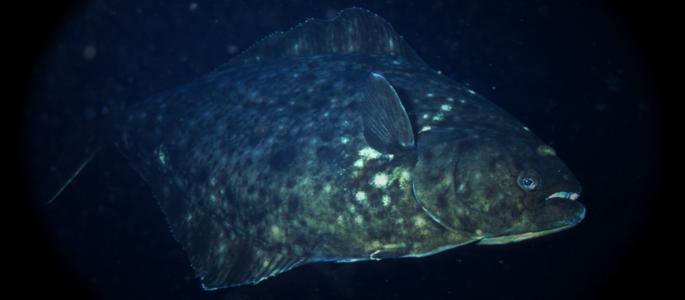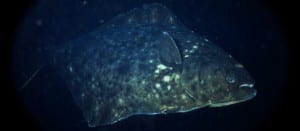Pacific halibut stocks show some signs of responding to several years of cuts to the commercial catch. That’s the good news according to scientists with the International Pacific Halibut Commission. The bad news is more cuts could be coming for next year. The IPHC met in Seattle in late November and heard reports on halibut fisheries in the U.S. and Canada and an assessment of halibut numbers in the Pacific.
Audio Player
For iFriendly audio, click here:
The IPHC recommends annual catch limits for halibut fishing fleets in the western U.S., Alaska and British Columbia. Declining halibut stocks have meant big reductions in the commercial catch.
“And what this is indicating to me is that the scientific results whether based on models or data have all been showing a strong decline in the stock over the last decade and that management’s responded very closely to that information.” said Ian Stewart, an IPHC scientist who outlined historical catch levels and stock estimates at the commission’s interim meeting in November. Scientists have been concerned that past estimates of halibut numbers and corresponding harvest rates were too high. That, they say, contributed to the decline.
Stewart described a graph that noted some good news about stock numbers this year. “The stock was declining under a period when we think in retrospect the harvest rate was above the target,” he said. “Given we’ve selected a target that’s quite reasonable that’s what we would expect to happen when we harvest in excess of the target that the stock would decline. What’s important and what’s cause for optimism here is that we see the 2012 point and backing up to 2011 that’s connected to it and the point above it, we see that as that harvest rate has been brought down toward the target. The decline in the stock has actually slowed and even reversed slightly in 2012 and again that’s good news.”
Despite that good news, commercial catch levels may not be headed upward anytime soon. Stewart told the commission that scientists are still not seeing large numbers of young fish growing to commercial catch size.
Because of the commission’s concerns over the uncertainty of halibut stock assessments, the staff this year changed the way it presented its catch recommendations. Instead of proposing single numbers for catch levels in each area, Stewart outlined a chart that showed a range of coast-wide harvest options. One option highlighted by a blue line would allow a total commercial catch of 22-point-7 million pounds. That would be a 33 percent reduction overall.
“That is essentially what the catch advice would have been in previous years,” Stewart said. ‘This year we’re gonna present you with more information, both in terms of relatively risk probabilities associated with that and other levels as well as the risk associated with different management alternatives.”
Under that “blue line” option, Southeast’s area 2C would go up by about a half a million pounds. Other areas like 3A in the central gulf of Alaska would see a drop of more than two and a half million pounds under that scenario. But that’s just one possibility. As part of the new format this year staffers offered alternatives that ranged from no fishing coast-wide to much higher harvest rates which could lead to bigger reductions in future years.
Commission chair Michael Pearson of Canada asked for some clarification from IPHC director Bruce Leaman. “It’s not staff advice the blue line. The blue line is a reference to in previous years what would have been staff advice,” Pearson asked. “Now we’re looking at a table which is basically here are the various options we have to look at as commissioners including what would have been in previous years the staff advice. I think it would be fair to say Bruce its not as if the staff is saying to us is our view is you must choose, not must choose, that you should be choosing the blue line.Is that correct to say?”
“I think the best statement you made Mr. Chairman is this represents the application of the current harvest policy to the results of the 2012 assessment,” Leaman responded.
Pearson also noted the need for better explanation of why additional catch reductions are needed in light of some of the positive data. “So on the one hand that kind of information saying things look like they’re getting better. But on the other hand and people will nonetheless focus on the blue line saying they’re still talking about a possible reduction of 40 percent in the catch. So I think there’s going to be some need for people to have a better understanding of what seems to be contradictory information. I know you’ve tried to do that but I suspect there may need to further think that through so people fully understand,” he said.
Pearson also asked for more information about the various alternatives and what they would mean for catch levels in each of the regulatory areas. That information could help commissioners make a decision on the commercial halibut catch during the IPHC annual meeting in late January in Victoria, British Columbia.












